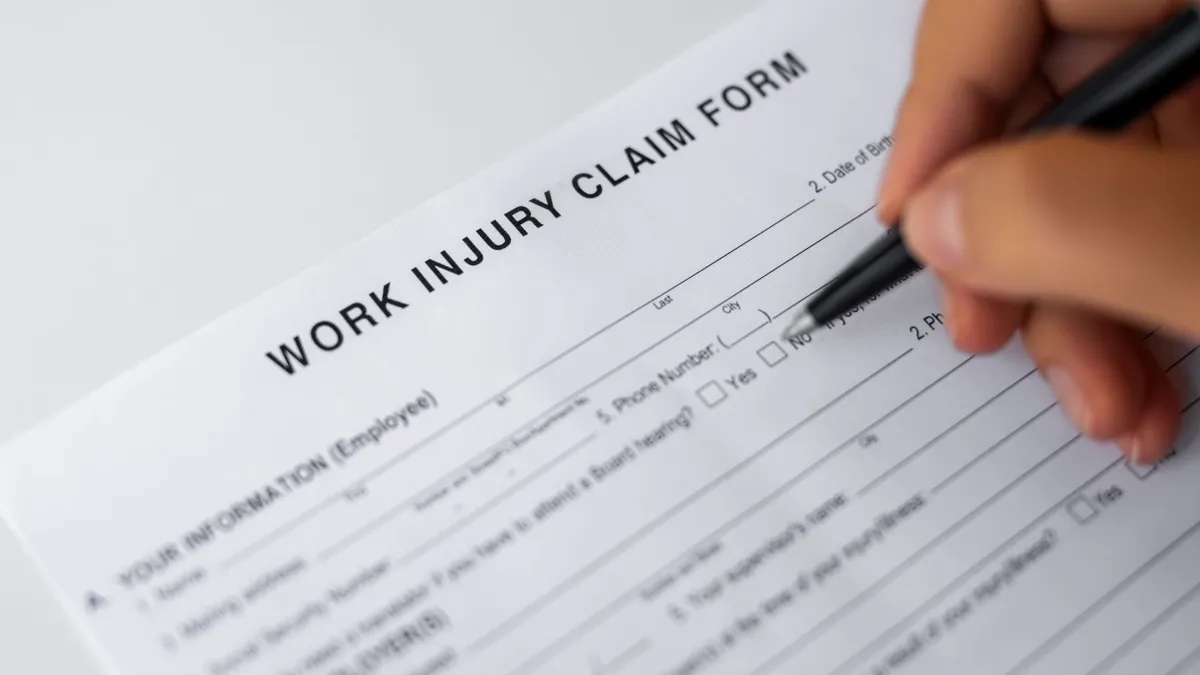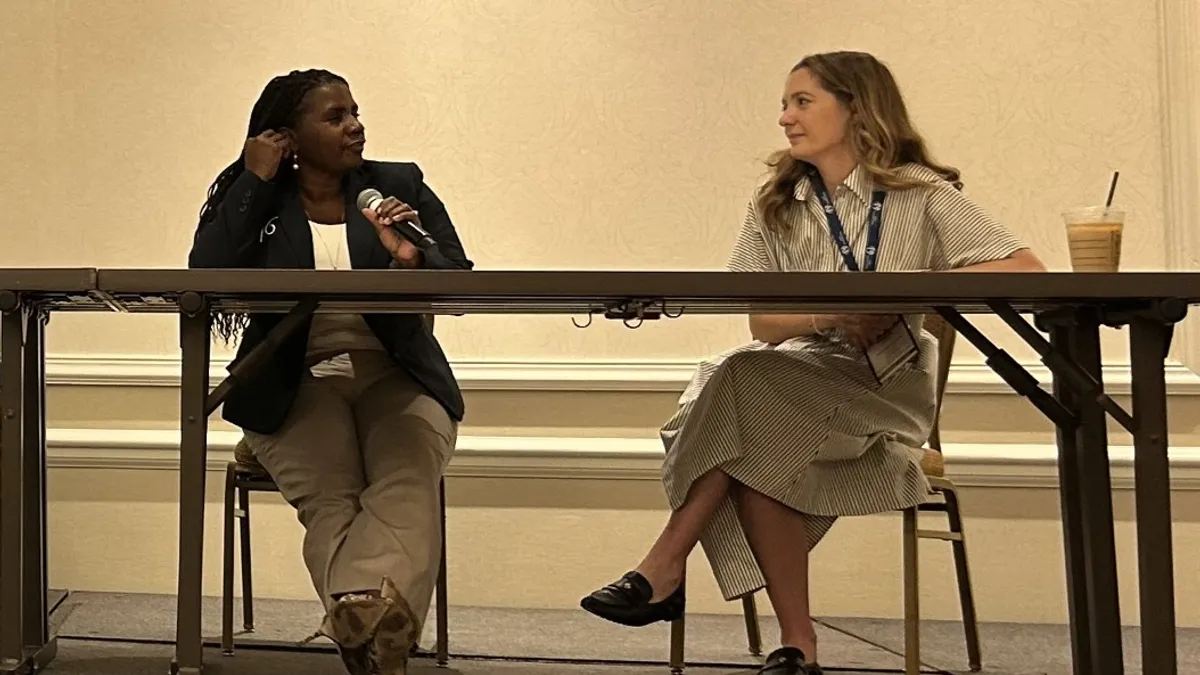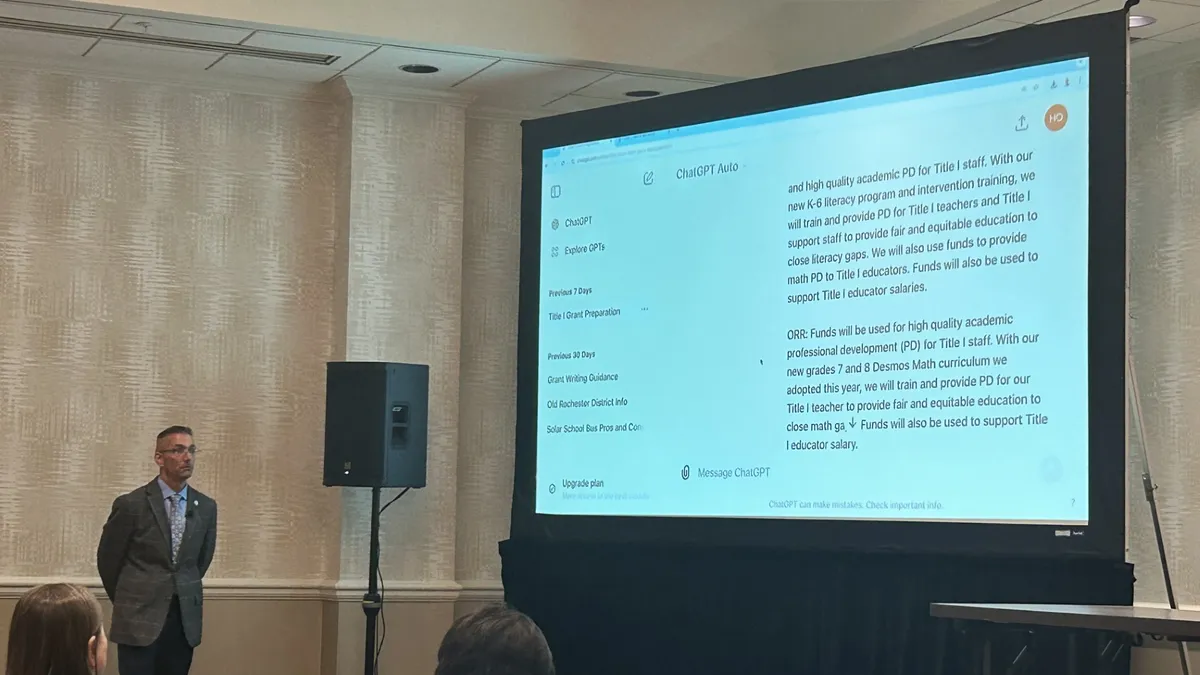NASHVILLE — On-the-job injuries can happen at schools — and when a staff member gets hurt or becomes ill because of their job, it’s important that employees feel safe and supported when they return to work.
That’s why schools can’t let their handling of workers’ compensation programs be an afterthought, said Sarah Viera, executive director of business services and operations at Mequon-Thiensville School District in Wisconsin. If a school district poorly manages its workers’ compensation program, employee well-being can be affected, she said.
Workers’ compensation is a form of insurance that provides financial support and medical benefits to employees who get injured or ill as a result of their job. These programs often cover medical expenses like hospital bills, doctor’s visits and rehabilitation. They can also offer wage replacement benefits if the employee cannot work as they are recovering.
During a Wednesday session at the Association of School Business Officials International annual conference, Viera shared three best practices for bolstering workers’ compensation programs in school districts.
Have a strong reporting system
Viera said she strongly encourages school staff to report any and all kinds of injuries — even if it’s just a papercut or stubbed toe — because even a minimal accident could potentially snowball into a bigger issue for which the district could be found responsible.
“I always tell our administrators that if you’re questioning in your head whether it should be reported, it should probably be reported,” Viera said. “You never know.”
Districts should also push for immediate reporting, and there should be an online system for this process if possible, she said.
When a report is filed quickly, the risk of severity is more likely to decrease, because the employee can get to a doctor sooner and the injury will be more manageable, Viera said. That then translates to helping the school district control its costs.
Employee claims are time-sensitive, Viera said, especially in Wisconsin where employers are required to decide within three days of a reported injury if an employee needs to come back to work following an illness.
Investigate every claim immediately and thoroughly
If a district leader has not investigated a workplace accident by the time it becomes a claim, “you’re already behind,” Viera said.
As soon as a report is made to the district’s workers’ compensation program, she said, it’s important that someone — such as a building and grounds staff member — goes to the scene and takes photos, particularly if an employee trips or falls.
If a video camera recorded the accident, administrators should review the footage, download and save it. Keeping the footage is helpful in case a claim is reopened later, Viera said.
Interviewing witnesses and other employees is a huge component of investigating an injury report, she added. It’s also helpful to review an employee’s recorded call to a hotline when they report a workplace injury or illness.
Additionally, every incident should be investigated as if it were to be a large claim, Viera said, adding that small issues can become expensive quickly.
Viera stressed the importance of having a centralized system for tracking claims. By doing so, districts will be able to identify potential trends. “It helps to identify those potential safety issues, so if we’re seeing something happening over and over and over again, then maybe we need to press pause and find out why this is such a safety issue.”
Be proactive
To help prevent workplace injuries or illnesses, Viera said employee programs that promote wellness and stress are helpful for supporting overall health and can ultimately reduce the risk of injury. School districts should also start to provide basic workers’ compensation trainings to school leaders and administrators, as well as those leading operational departments like buildings and grounds or food services.
Recognizing employees who do a good job following safety practices is another way to promote workplace safety, she said.
Furthermore, districts can send a safety survey to staff at each of their buildings, so employees have a chance to highlight any safety concerns they may have, Viera said. While it may not be feasible to immediately fix every potential safety hazard that is flagged, she said, districts can follow up with staff regarding what projects they are working on or plan to improve.
To ensure compliance, Viera recommends that district leaders keep up with the latest changes on workers’ compensation laws and regulations. On top of that, districts should ensure all required documentation in their programs is accurate and submitted in a timely manner.













